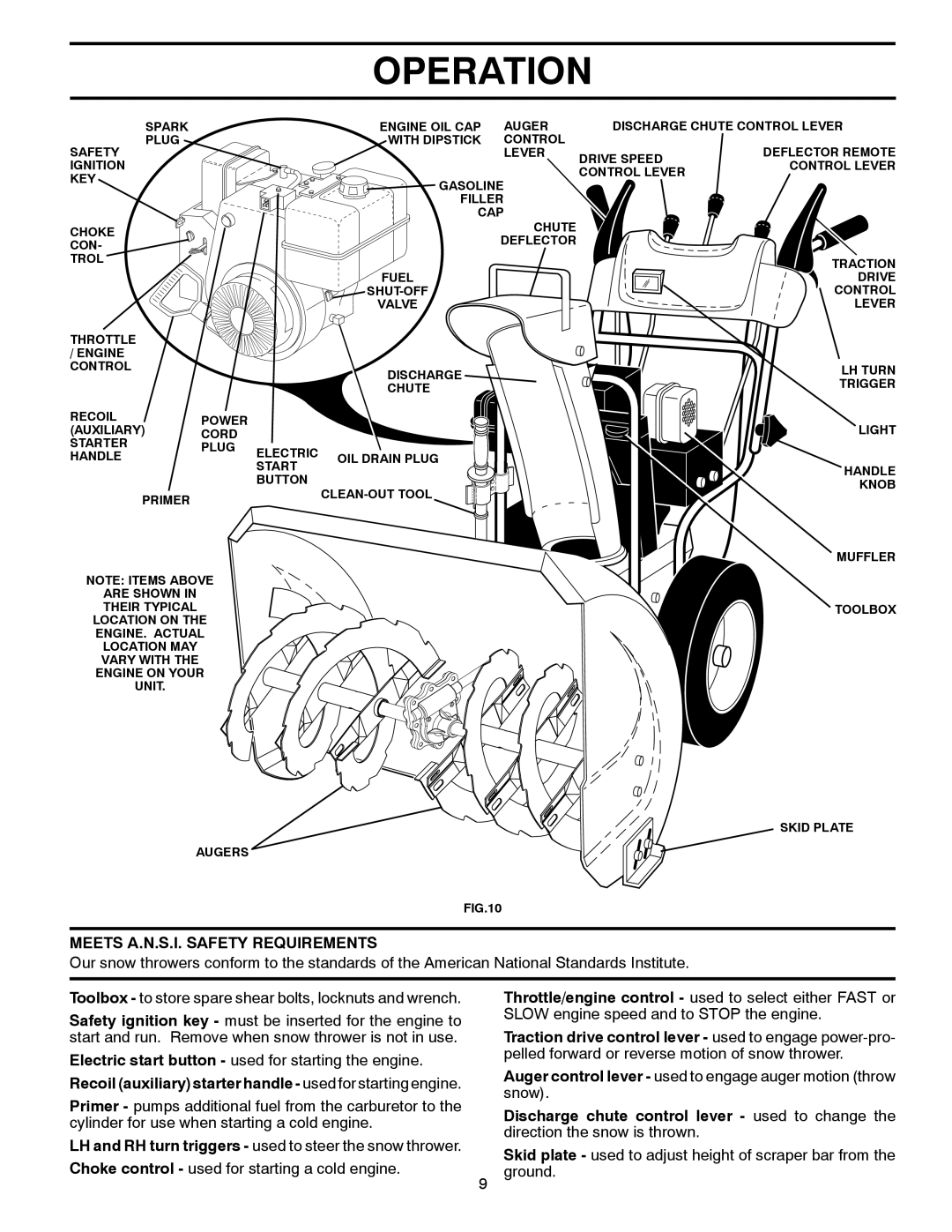96194000602, 418984 specifications
The Poulan 96194000602,418984 is a powerful and versatile chainsaw designed to meet the demands of both professional landscapers and homeowners who require a reliable tool for their cutting needs. This chainsaw is equipped with several innovative features and technologies that set it apart from other models in the market.At its core, the Poulan 96194000602 is powered by a robust 42cc, 2-cycle engine, which provides ample power for various tasks, from trimming branches to cutting down small trees. The engine is designed to deliver a strong performance while maintaining fuel efficiency, allowing users to work longer without frequent refueling. The incorporation of a gas-powered engine means that this chainsaw can deliver consistent power without the limitations of a battery-operated model.
One of the standout characteristics of this chainsaw is its ergonomic design. The lightweight construction and well-balanced design ensure user comfort, even during extended use. The chainsaw features an easy-to-grip handle, reducing fatigue and allowing for a more controlled cutting experience. Additionally, its anti-vibration technology helps minimize vibrations felt by the user, enhancing comfort and safety.
The Poulan 96194000602 is equipped with a 16-inch bar and chain, making it suitable for a variety of cutting tasks. The chainsaw's chain tensioning system allows for quick and convenient adjustments, ensuring optimal performance and longevity of the chain. The tool-less chain adjustment feature is especially beneficial for users who need to make adjustments quickly in the field.
Safety is also a priority in the design of the Poulan 96194000602. It comes with a built-in chain brake that instantly stops the chain's motion in the event of kickback, providing an added layer of safety to the user. Furthermore, the chainsaw features an automatic oiling system that ensures the chain is adequately lubricated during operation, reducing wear and tear.
In summary, the Poulan 96194000602,418984 chainsaw combines power, comfort, and safety features that make it an excellent choice for both homeowners and professionals alike. Whether you need to tackle yard work or outdoor projects, this chainsaw delivers reliability and performance, ensuring you can get the job done efficiently. With its user-friendly design and advanced technologies, the Poulan chainsaw is a smart investment for anyone in need of a high-quality cutting tool.

